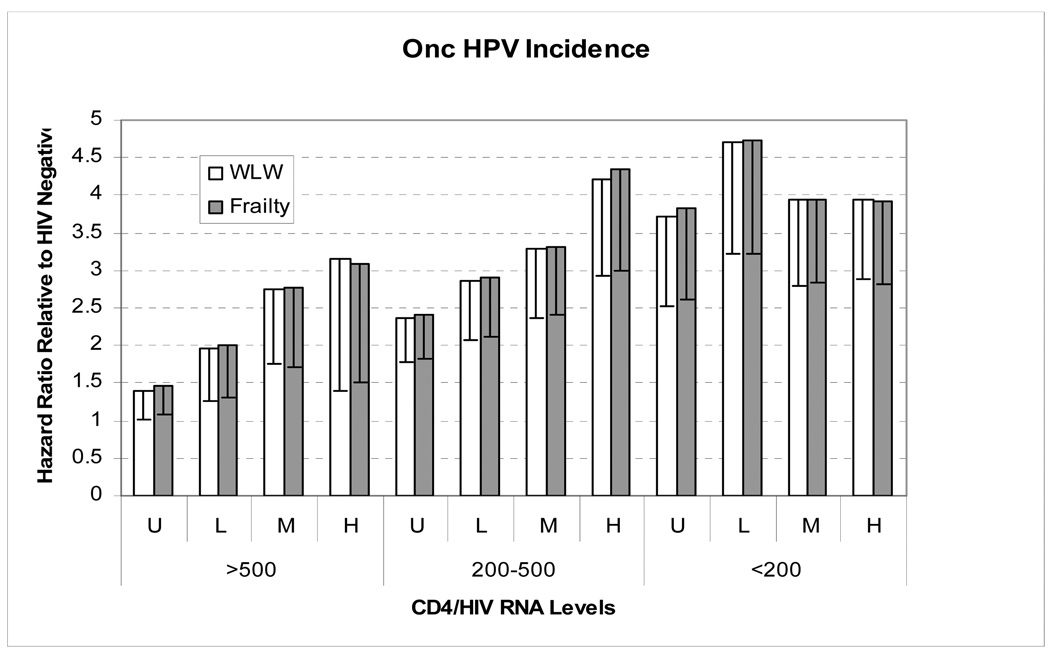Figure 3.
A comparison of the hazard ratios (HRs) calculated using frailty models (model(1.10)) versus Wei Lin Weisfeld (WLW) Cox models (model (1.8)). The specific example given is the relation between the incident detection of seven common oncogenic HPV (i.e., 16/18/31/33/35/45/58) and 12 separate CD4+ / HIV RNA strata, with HIV-negative women used as the reference group. The vertical bars represent the HRs, and the line within each bar represents the lower 95% confidence limit of those HRs. The CD4+ / HIV RNA strata are defined as the follows. Reference Group = HIV negative women. CD4+ count: >500, 200–500, <200 cells/mm3. HIV RNA level: Undetectable (U)<4000, Low (L)=4000–20000, Moderate (M)=20001–100000 and High (H)>100000 copies/mL. The adjustment variables are the same as reported in Figure 1. Both the frailty and WLW models incorporated HPV type-specific baseline hazard functions while assuming a common association with CD4+ count / HIV RNA stratum. Overall, the results show that frailty models (a form of mixed effects models) provide similar HR estimates as WLW (a form of marginal models) using the same HPV dataset. As discussed in the text, the close agreement between WLW and frailty models in our data may reflect small correlation between the incident detections of different types of HPV, whereas the large differences observed between the GEE and mixed effects model estimates (Fig 1) likely reflects strong correlations between the cross-sectional detection of the same HPV types over serial semi-annual visits (i.e., the high frequency of persistent and recurrent infections).

